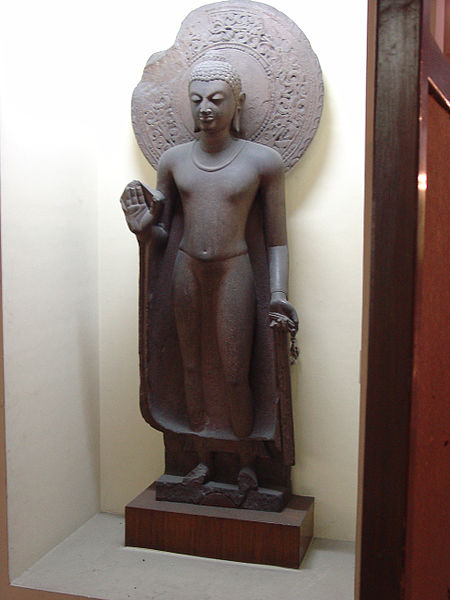
Standing Buddha
Sarnath, Gupta period, 5th century AD
Indian Museum, Calcutta
Sarnath is where the Buddha preached his first sermon. The "classical" period of Gupta art is well-represented by this graceful, ethereally calm piece. Its left forearm and hand have been restored. Compared to earlier Kusana-period examples, the lowered position of the Buddha's right hand, while still in abhaya mudra, now appears more like a benediction and less like a gesture of command (I am indebted to Huntington, p. 201 for this insight). The Buddha's robe is so transparent as to be almost invisible; however, this effect would have been covered up originally by paint.
One should always keep in mind - because it is so hard to imagine now - that these light sandstone statues, like their marble and limestone cousins in ancient Greece and Rome and the Far East, were originally painted in bright primary colors and flesh tones. Our appreciation of their subtle and pure surfaces, from which the paint has long ago been lost, reflects our modern aesthetics, not those of the statues' creators.


